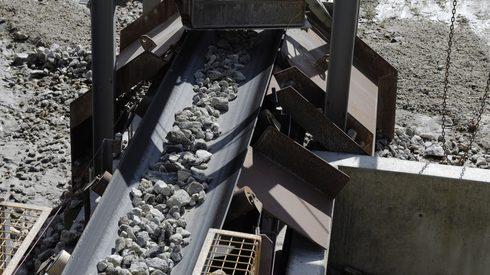Output in the first four months of 2022 also fell by 7.1% to 619.1 million tonnes from a year earlier, it said.
With the exception of India, Russia and Turkey, the top 10 steel-producing countries in the world all experienced a drop in crude steel production last month. For the January-April period, only Indian steel output experienced growth.
Among steel-producing regions, only European countries outside of the European Union, per Worldsteel’s methodology – namely the United Kingdom, Bosnia-Herzegovina, Macedonia, Norway and Serbia, as well as Turkey – posted a slight increase of 0.5% in crude steel output, while production in other regions decreased in April.
Top 10 steel-producing countries
China, the world’s biggest steelmaking country, experienced a drop in crude steel production to 92.8 million tonnes in April and to 336.2 million tonnes in January-April. This is down by 5.2% and 10.3% respectively.
Fastmarkets understands that lockdowns to contain the spreads of Covid-19 have continued to negatively impact steel demand and prices in China. Therefore even with the Chinese government’s efforts to stabilize economic growth, the global downtrend may weigh on its domestic and export prices.
India, the world’s second-largest steelmaker, produced 10.1 million tonnes of steel in April, up by 6.2% year on year, and 42.3 million tonnes from January to April, up by 6.5%.
But India could withdraw from steel export markets with its imposition of fresh export duties, which could consequently affect the country’s steel output.
At the same time, news of India’s export duty on certain steel products may result in a rebound in global steel prices, according to some market participants.
Japan, the world’s third-largest steelmaker, produced 7.5 million tonnes of crude steel last month, down by 4.4% year on year.
The United States, at fourth place, produced 6.9 million tonnes, down by 3.9%.
Various quotas, tariffs and duties maintained the US’s reliance on domestic steel production. New steel capacity in the country aimed at modernization and decarbonization of the industry is unlikely to depress prices.
Russia is expected to report a slight increase of 0.6% in its crude steel production to 6.4 million tonnes in April, Worldsteel said.
But with the Russian economy hit by international trade sanctions due to the country’s invasion of Ukraine, Fastmarkets is of the opinion that its actual output in April might show a negative trajectory.
Russia’s shrinking domestic steel consumption amid the country’s economic uncertainty due to its war with Ukraine and limited export opportunities are expected to result in a reduction of steel output.
South Korea produced 5.5 million tonnes of crude steel in April, down by 4.1% year on year, while Germany produced 3.3 million tonnes, down by 1.1%.
With the steel market remaining weak, producers in Germany are considering production cuts to balance supply with demand.
Turkey increased its crude steel production by 1.6% in April to 3.4 million tonnes.
In recent weeks, Turkish mills have shown limited buying interest in deep-sea cargoes of steel scrap imports amid a struggle to find buyers for their finished and semi-finished steel goods.
Brazil produced 2.9 million tonnes of crude steel in April, down by 4.0% year on year. The decrease may be attributed to high levels of steel output a year earlier.
Worldsteel estimated that Iran had produced 2.2 million tonnes of crude steel last month, down by 20.7% from a year earlier.
Fastmarkets believes the country’s steel output might have been hit by export duties and may remain subdued on expected electricity cuts during the summer.
But following price decreases, Iran’s export duties on steel products such as hot-rolled coil, cold-rolled coil, rebar and beam have been eliminated, while those on semi-finished steel have fallen to a minimum in May, according to a recent government directive.
Crude steel production by region
Asia and Oceania, the largest steel-producing region, according to the Worldsteel methodology – which includes Australia, China, India, Japan, New Zealand, Pakistan, South Korea, Taiwan and Vietnam – produced a total of 121.4 million tonnes crude steel in April, down by 4% year on year. In January-April, steel output in the region fell by 7.7% to 452.6 million tonnes.
Output among the EU’s 27 nations decreased by 5.4% to 12.3 million tonnes last month. The bloc’s output over the first four months of 2022 dropped by 4.7% to 48.9 million tonnes.
Other European countries outside of the EU increased production by 0.5% in April to 4,2 million tonnes, but in January-April, their cumulative output decreased by 3% to 16.1 million tonnes.
Steel output in North America decreased by 5.1% to 9.4 million tonnes in April and by 2.3% to 37.4 million tonnes in the first four months of 2022.
Russia, Belarus, Kazakhstan, Moldova, Ukraine, Uzbekistan and Ukraine collectively decreased production by 18.4% to 7.3 million tonnes in April and by 11.0% to 31.3 million tonnes from January to April. This was due to a significant reduction of steel output in Ukraine due to Russia’s invasion.
South American steel output totaled 3.6 million tonne in April and 14.3 million tonnes in January-April, down by 4.8% and 3.2% respectively.
The Middle East region, including Iran, Qatar, Saudi Arabia, and the United Arab Emirates, decreased production by 14.5% to 3.3 million tonnes in April, and by 5.3% to 13.5 million tonnes in January-April. April’s reduction may be attributed to slower demand during the observance of the Islamic holy month of Ramadan in Muslim countries.
Steel output in Africa went down by 5.4% in April to 1.2 million tonnes. It also went down by 3.6% to 5.0 million tonnes in the first four months of 2022.





